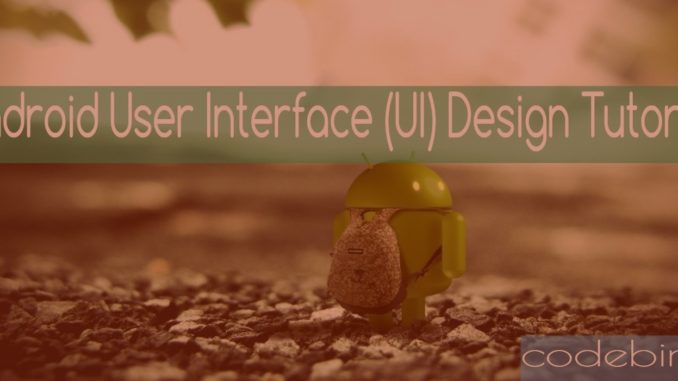
All UI components in an Android application are manufactured utilizing View and ViewGroup objects. A View is an article that draws something on the screen that the client can collaborate with. A ViewGroup is an article that holds other View (and ViewGroup) objects with a specific end goal to characterize the design of the interface.
Android gives a gathering of both View and ViewGroup subclasses that offer you regular info controls, (for example, catches and message fields) and different design models, (for example, a direct or relative format).
Android Screen UI Components
<?xml version="1.0" encoding="utf-8"?>
<LinearLayout xmlns:android="http://schemas.android.com/apk/res/android"
android:orientation="vertical"
android:layout_width="fill_parent"
android:layout_height="fill_parent"
>
<TextView
android:layout_width="fill_parent"
android:layout_height="wrap_content"
android:text="@string/hello"
/>
</LinearLayout>
Amid runtime, you stack the XML UI in the onCreate() occasion handler in your Activity class, utilizing the setContentView() technique for the Activity class:
@Override
public void onCreate(Bundle savedInstanceState) {
super.onCreate(savedInstanceState);
setContentView(R.layout.main);
}
LinearLayout
<?xml version="1.0" encoding="utf-8"?>
<LinearLayout xmlns:android="http://schemas.android.com/apk/res/android"
android:orientation="vertical"
android:layout_width="fill_parent"
android:layout_height="fill_parent"
>
<TextView
android:layout_width="fill_parent"
android:layout_height="wrap_content"
android:text="@string/hello"
/>
</LinearLayout>
Views
Types of views:
- TextView, ImageView, Button…
- ListView, GridView
- Recycler View
- ViewPager
Here’s the layout component activity_album_list.xml that I had written.
<RelativeLayout xmlns:android="http://schemas.android.com/apk/res/android" xmlns:tools="http://schemas.android.com/tools" android:layout_width="match_parent" android:layout_height="match_parent" tools:context=".AlbumListActivity"> <android.support.v7.widget.Toolbar android:layout_width="match_parent" android:layout_height="wrap_content" android:layout_alignParentTop="true" android:is="@+id/toolbar" android:background="?attr/colorPrimary" style="@style/ThemeOverlay.AppCompat.Dark.ActionBar" /> <android.support.v7.widget.RecyclerView android:id="@_id/album_list" android:layout_below="@id/toolbar" android:layout_width="match_parent" android:layout_height="match_parent" /> </RelativeLayout>
AlbumListActivity.java
public class AlbumListActivity extends ActionBarActivity {
public static Object sHook;
@InjectView(R.id.album_list)
RecyclerView mAlbumList;
@InjectView(R.id.toolbar)
Toolbar mToolbar;
@Override
protected void onCreate(Bundle savedInstanceState) {
super.onCreate(savedInstanceState);
setContentView(R.layout.activity_album_list);
ButterKnife.inject(this);
mToolbar.inflateMenu(R.menu.menu_album_list);
populate();
}
interface OnVHClickedListener {
void onVHClicked(AlbumVH vh);
}
static class AlbumVH extends RecyclerView.ViewHolder implement…
private final OnVHClickedListener mListener;
@InjectView(R.id.album_art)
ImageView albumArt;
@InjectView(R.id.name)…
Android Books To Learn Mobile Apps Programming
- Android Programming: The Big Nerd Ranch Guide
- Android Design Patterns: Interaction Design Solutions for Developers
- Android Application Development Cookbook – Second Edition
- Android User Interface Design: Turning Ideas and Sketches into Beautifully Designed Apps (Usability)
- Android Recipes: A Problem-Solution Approach for Android 5.0
- Hello, Android: Introducing Google’s Mobile Development Platform (Pragmatic Programmers)
- Beginning Android Games


Leave a Reply